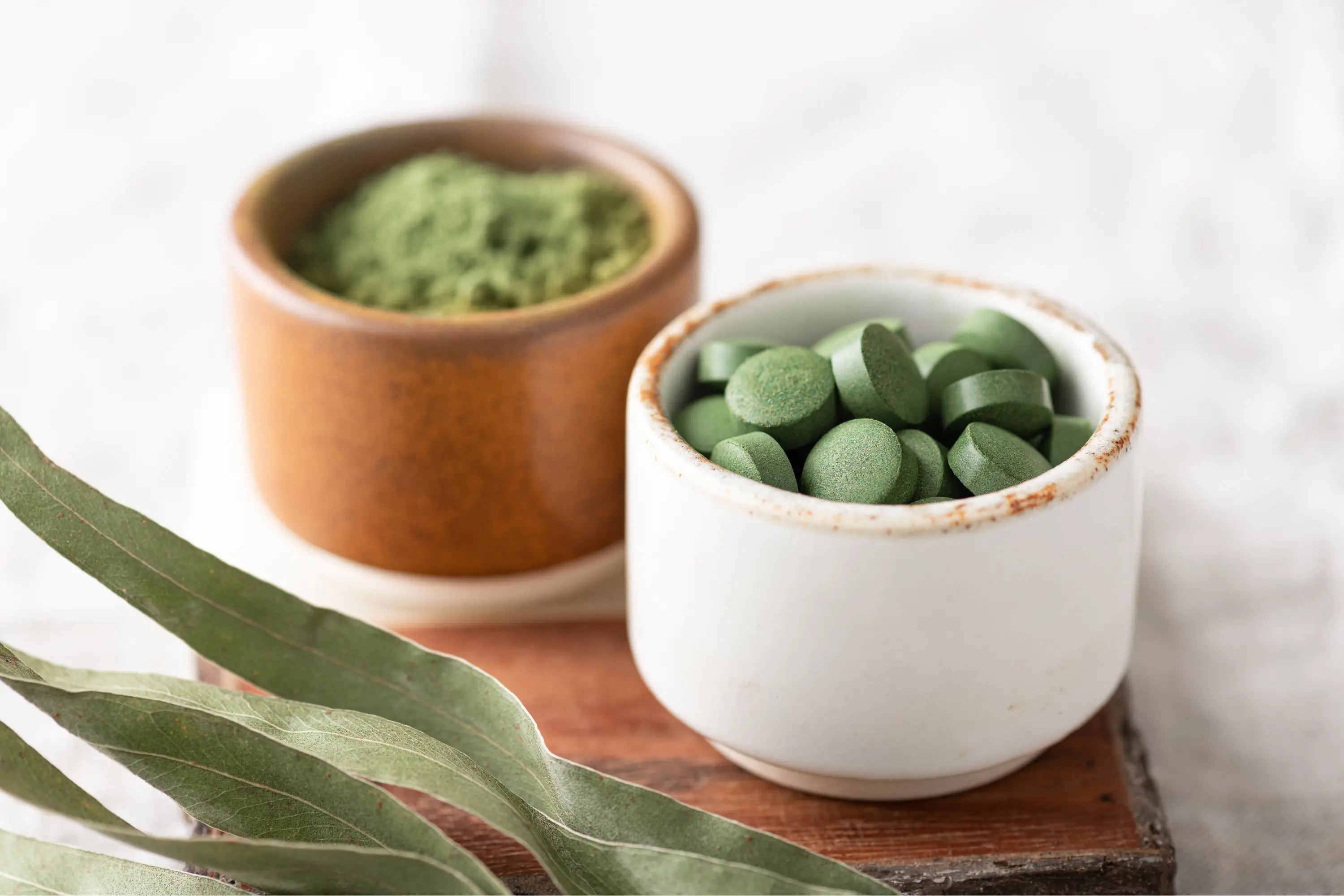Are you looking for a natural way to supercharge your health and boost your well-being? Chlorella and chlorophyll are among the most vibrant green superfoods on the planet. These green powerhouses are filled with essential nutrients and powerful antioxidants, offering a lot of health benefits. Chlorella and chlorophyll are gaining popularity in the wellness world, offering immune support, detoxification, and even weight loss. Why do they differ from each other? Do you know which one is right for you and your healthy lifestyle?
Here, we explore the health benefits, unique properties, and how chlorella and chlorophyll can transform your daily life. Let's explore the secrets to a healthier Chlorella and chlorophyll, more vibrant lifestyle together.
What is Chlorella?
Chlorella is an ancient, green micro-alga from the family Chlorellaceae, found in fresh and salty water and has many of the same properties as chlorophyll. It is considered one of the most nutrient-dense foods on the planet and is loaded with vitamins, minerals, and antioxidants Two scientists, Jorgensen and Convit, fed 80 patients at a leper colony in Venezuela a soup made from concentrated Chlorella during the 1940s. There is documented evidence that microalgae could be used as a health supplement based on the improvement in their physical condition. Today it is playing a new and important role for mankind.
Chlorella Benefits as a Food:
One of the remarkable nutritional qualities of Chlorella is its high protein content. It is over 60% protein including all the amino acids essential to human nutrition. This is nearly three times as high as the protein content present in beef, for its protein alone. Chlorella is useful as a protein powder, a food supplement, or survival food.
Medicinal Properties
It is a good source of antioxidant activity, and anti-inflammatory properties, which may support detoxification, immune function, cholesterol management, and digestive health due to its nutrient-rich and potential bioactive compounds.
Proteins and amino acids
Chlorella is a good source of plant-based proteins and contains essential amino acids like lysine, histidine, arginine, threonine, serine, glutanic acid, valine, methionine, isoleucine which are necessary for human health.
Vitamins and minerals
Chlorella is packed with vitamins, such as vitamin C, vitamin B12, and vitamin A, and essential minerals, including iron, magnesium, and zinc, supporting overall nutritional well-being and wellness of our daily lifestyle.
Nucleic acids
It contains nucleic acids like RNA and DNA, which play vital roles in cellular regeneration and repair.
Benefits of Chlorella
In the human body, chlorella enables us to take large amounts of chlorophyll without using chemically extracted products and gives benefits to the immune system, the digestive tract, the endocrine or hormonal system, and the cardiovascular system. In the human body, chlorella stimulates the production of interferon, an immune factor that has cancer-fighting properties. Also, it has been shown to lower cholesterol levels and supports cardiovascular health by acting as a potent detoxifier and offering various health benefits. Its antioxidant properties make it beneficial for promoting youthfulness as well. Chlorella also helps maintain a healthy digestive system, supports an active immune system, and aids in digestion.
What is Chlorophyll?
Chlorophyll is a green pigment that provides plants with their color.Chlorophyll is responsible for converting carbon dioxide and water into nourishing food through the enchanting process of photosynthesis. Chlorophyll is found in green leafy vegetables and is also available as a dietary supplement, also called nature’s healer.
Chlorophyll as a Blood Builder:
Chlorophyll, the vital green pigment in plants, plays a significant role in supporting human life. Today, the rising levels of radiation pose a challenge to humanity, as we have control over exposure to various forms of pollution, such as chemicals in food or synthetic drugs, but reducing radiation intake remains a complex task.
Medicinal Properties of Chlorophyll
It is a good source of antioxidant properties, anti-inflammatory properties, which may support cleansing effects, and immune system support.The constituents of chlorophyll have natural healing properties
Vitamins and minerals
Chlorophyll contains vitamins A, C, E, and K, as well as minerals like magnesium, iron, calcium, potassium, and zinc. These nutrients contribute to reducing inflammation, enhancing oxygen transport, and improving blood quality.
Benefits of Chlorophyll
Chlorophyll is a powerful cleanser for our body and a builder of the hemoglobin in the blood. It removes lethal materials from all inner organs. It plays a vital role in building a robust red blood cell count, contributing essential iron to support your overall well-being, and it supports various bodily functions, including detoxification, wound healing, and reproductive health. Additionally, it aids in improving milk production, supports blood clotting, and helps alleviate respiratory issues and allergies.
While Chlorella and Chlorophyll are both green and rich in nutrients, there are some key differences between the two. Here's a table highlighting the similarities and differences between Chlorella and Chlorophyll:
Chlorella vs Chlorophyll

Final Thoughts:
Hopefully, this article will help you understand the similarities and differences between chlorella and chlorophyll, along with their potential health benefits and key properties. While they have similarities, their composition sets them apart. Identifying your specific health needs can guide you in choosing the best option. If you're uncertain, consulting a medical professional can provide further guidance. Whether you choose chlorella, chlorophyll, or both, they have the potential to enhance your well-being and improve your daily life.





Share:
Moringa Benefits for Men
What Is Mullein Good For: Check the Surprising Health Benefits of Mullein